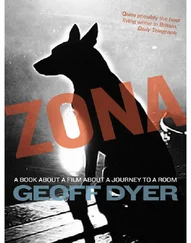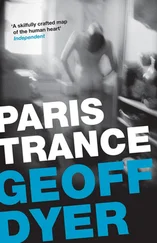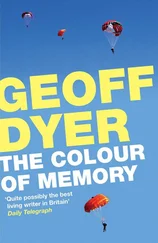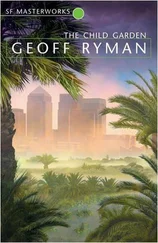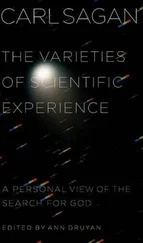He was sitting on a curved metal bench in a busy piazza: his second day in the city. He scrawled ‘Imbria’ on the back of the postcard he had found there and addressed it to Rachel. Picturing himself arriving back and seeing the card again made Walker think of what she had told him the night they had first met: dreaming of a garden where you pick a rose, waking to find your bed strewn with petals.
Seeing Walker seal the envelope a small boy offered to post it for him. Walker handed over a few coins and the boy ran to the other side of the piazza. Through the pigeon-scattering crowd Walker saw him stand on tiptoe and slot the card into a yellow letter-box.
The man who had been sitting at the other end of the bench, meanwhile, hauled himself to his feet and left. Lodged between the metal slats where he had been sitting Walker noticed a leaflet which he picked up and read, vacantly, in the way you read nutritional information or special offers on the sides of cereal packets. It was a letter, written by a local film-maker named Marek. He was making a film of the city and the people who visited it, the letter explained. It would be a new kind of film, made up entirely of photographs, snaps, videos and Super 8 films taken by residents or tourists who were in the city on 9 April. He would then combine the diverse material into ‘a narrative montage of the city’. The success of the enterprise depended largely on the co-operation of the people themselves and he asked any visitors to send copies of the snaps or films they took that day in Nemesis. Obviously he would reinburse them for the cost of the developing. This had been made possible by the generous sponsorship of. . Walker skimmed the list of participating film-manufacturers and moved on to the bottom of the letter where he had set out the titles of his previous films, a few laudatory quotes from the press and the address to send material to.
Walker looked at the date: 9 April, The ninth of the fourth. He had assumed that the date in the book in Imbria had meant 4 September, the fourth of the ninth, three days from now; but if the dates had been set down American-style with the month preceding the day, then the date in the book was the day on which the film was being compiled.
He hurried to a pay-phone, half expecting it to ring, like a dog warning him not to approach, and dialled Marek’s number. Engaged. He waited a minute and dialled again. This time the phone was answered almost immediately, by the film-maker himself. Walker explained that he was a journalist interested in Marek’s work and wondered if it would be possible to do an interview. When there was silence on the other end Walker reeled off a list of the publications he wrote for, mentioned a book he was writing. Marek sounded sceptical but he agreed to meet with Walker ‘for a quick chat’.
‘When would be a good time?’ said Walker.
‘Would it be possible to come today?’
‘Yes.’
‘Could you come soon?’
‘That would be fine.’
‘In about one hour?’
‘Perfect.’
Walker replaced the receiver and caught a taxi. He was full of anticipation and paid no attention to his surroundings until the cab dropped him near the docks in the warehouse district. He found the right building and jabbed the bell. The intercom cleared its throat and Marek told him to come up.
The studio was a large loft space, screened off into separate areas. Marek came to meet him and they shook hands. He was shorter than Walker, wearing an old sweater and jeans. Espresso stubble, dark eyes ringed by insomnia circles. Walker formed an impression of a man who returns from dinner at midnight, makes himself coffee and settles down to work until dawn.
They waited for the coffee to drip and then walked to the back of the studio, to what Marek called his office. It was partitioned off from the rest of the studio and contained a desk, table, telephone, two chairs, graphics instruments. Walker set up his dictaphone on the edge of the desk and asked Marek about his films. He had no interest, apparently, in talking about his past films but, to Walker’s relief, was eager to answer questions about the new film, the city montage.
‘We printed five thousand leaflets — you’ve seen the leaflets, yes? — in five different languages. So, twenty-five thousand leaflets. We left them in bars and restaurants, galleries. Then, from dawn of the ninth we handed them out in the main tourist parts of the city.’
As Marek talked he reached up to a shelf behind him and took down a snow-storm of the city’s cathedral. He shook it up and let the snow swirl around the model’s twin towers.
‘We had no idea what the response was going to be. At best we expected to get, I don’t know, maybe two thousand replies. There were so many things that could go wrong. You know, people just chuck it away without reading it, others read it and aren’t interested. People intend doing it but lose the leaflet or the address or just don’t get round to doing it when they get home. Or they see their photos and think nobody could be interested in these. It all hinged on this initial response but for a week there was nothing. Then a few things from local people but after three weeks it looked like it hadn’t worked.’
The snow had settled, the cathedral was plainly visible. Marek picked it up again, shook it and placed it on the table. Walker kept glancing at the silent swirl of flakes.
‘Then it started pouring in. Stuff was arriving from all over the place, Germany, Greece, Japan, Australia. Photos were still coming in up until a month ago — by now it’s just about dried up. Then the real work had to begin. The response was almost too good. The amount of material we had to get through was so daunting. And that’s what we’ve been doing for the last couple of months.’
‘So what form is it taking?’ asked Walker, nodding like a journalist.
‘First we needed to arrange everything in chronological order. That’s actually much easier than you think. The individual snaps on a film are all in order and then there are other indications — shadows, light. Sometimes there’s even a clock. We’ve taken copies and now have everything broken down into quarters of an hour. At the same time we’ve been filing everything by place, all the shots at Piazza San Pietro, for example. That way it can all be cross-referenced. It will make the assembling easier later on but, you know, it’s taken a lot of time and it’s difficult to see the wood for the trees.’
‘You have no idea of the form it might take?’
‘Some kind of form will emerge but with a mass of material like this that doesn’t happen until you start nudging it a bit. Besides, there are all sorts of technical problems. How to integrate the snaps and the moving footage, how to get a kind of narrative.’
Marek waited for the next question; they both looked over at the snow-storm which had almost settled.
‘I wonder,’ said Walker, shifting in his seat. ‘Perhaps it would be possible to follow an individual through the day. I mean, the person featured in one picture would crop up in the corner of another, and a third and a fourth. It might be possible to track someone’s movements through the day.’
‘That’s something I hadn’t thought of,’ said Marek. ‘But it might be possible, yes.’ Walker could see that the idea instantly attracted Marek. He was silent and Walker sensed that he was already working through the inherent possibilities and difficulties of such a project. He picked up the snow-storm and turned it over in his hands, looked at Walker. The dictaphone continued running, measuring the silence between the two men.
‘Maybe you had this idea before you came to speak to me,’ said Marek finally.
‘Not exactly.’
‘But you are more interested in this idea than you are in. . What was the name of the book you are writing?’
Читать дальше


